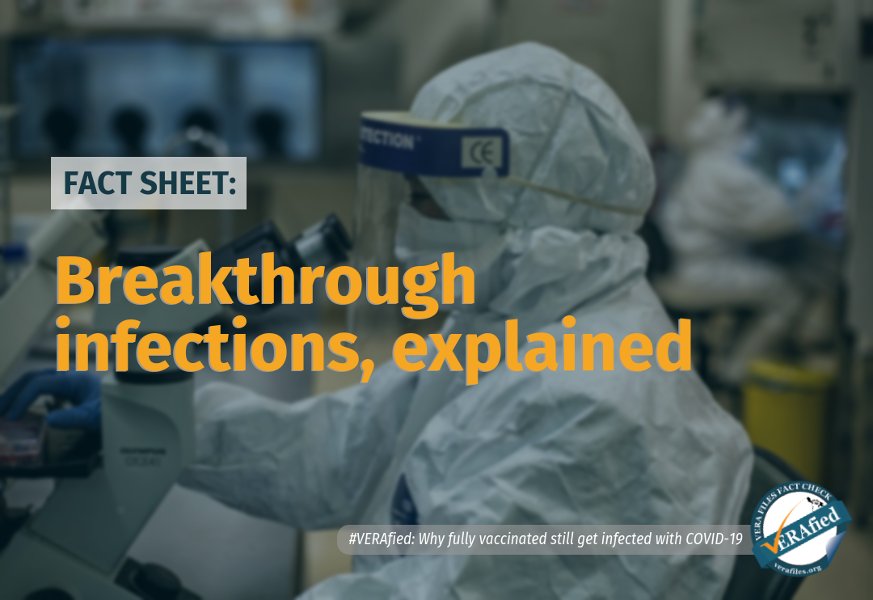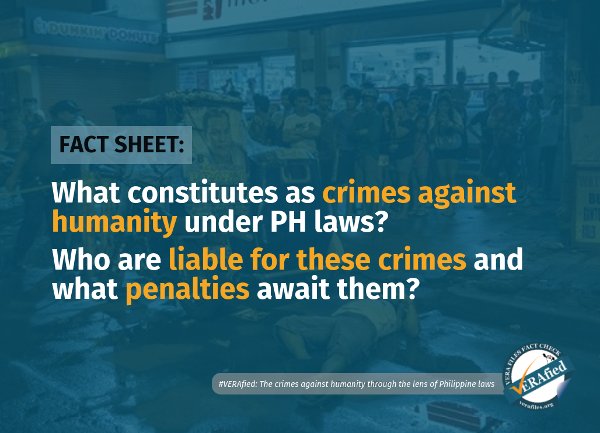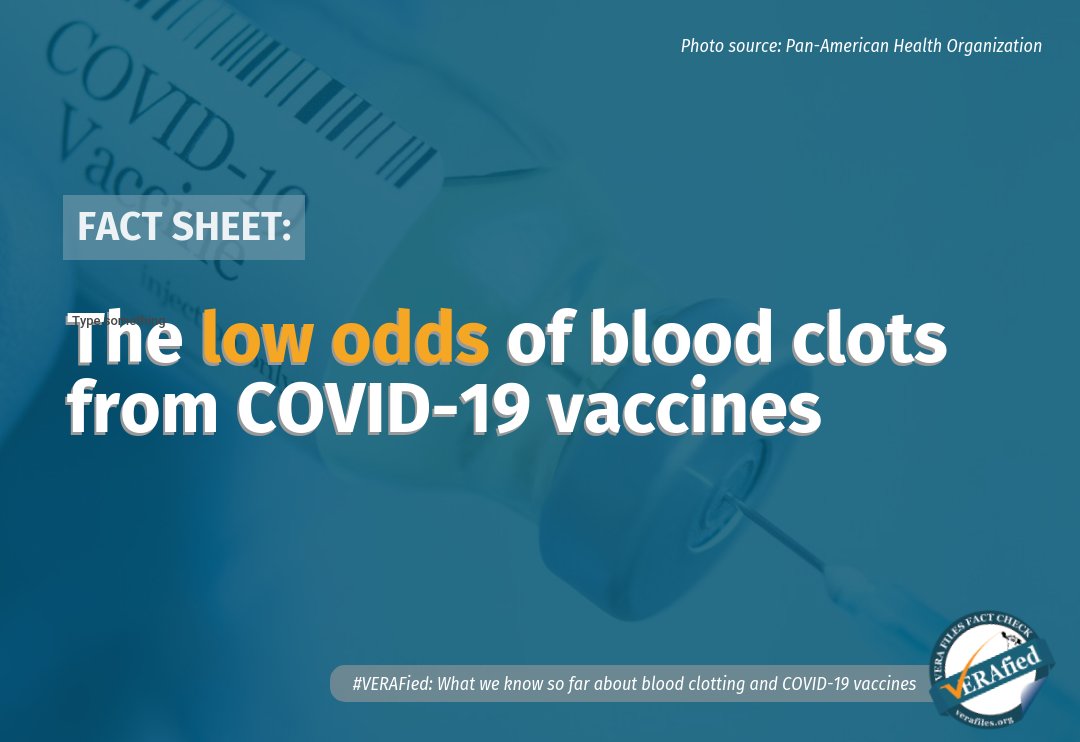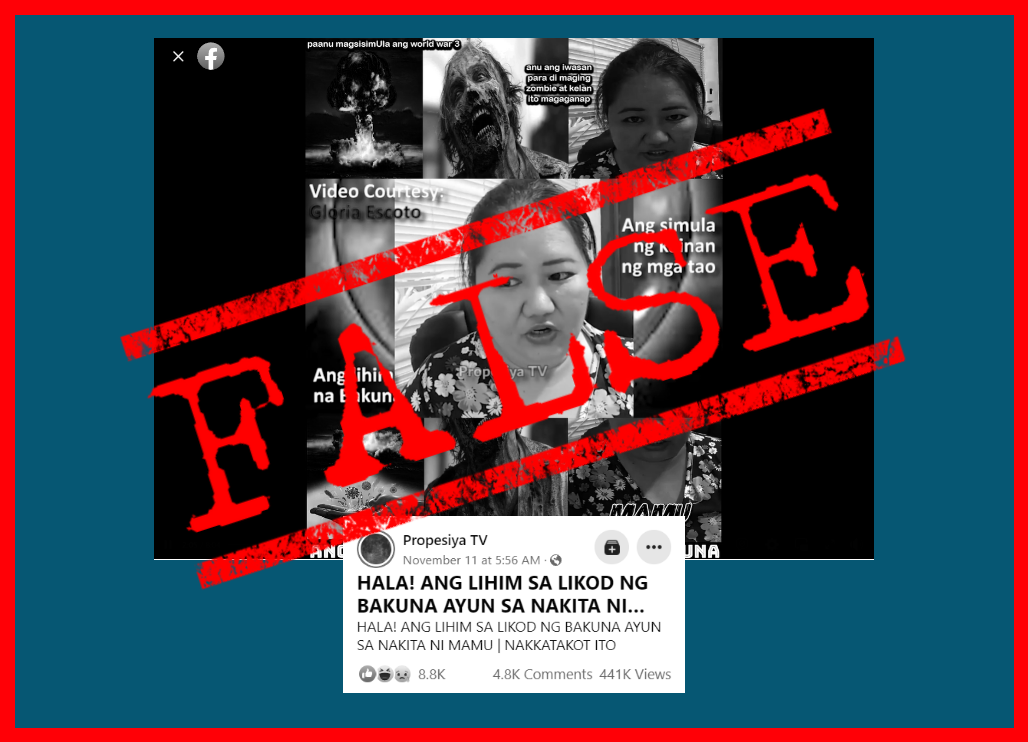(UPDATED) As cases continue to grow in the country during the second half of 2021, misinformed claims that the coronavirus disease 2019 (COVID-19) vaccines are “ineffective and unsafe” keep circulating on social media.
This month, VERA Files Fact Check flagged a misleading video blaming the vaccines for the deaths of 42 “fully vaccinated” people in Batangas. Following an adverse event assessment, provincial health officer Dr. Rose Ozaeta, however, explained that these were not related to the vaccines but from “complications from COVID-19 and pre-existing medical conditions before vaccination.”
Of the 42 people who died, only 10 had contracted COVID-19, eight received only the first dose, and two were fully vaccinated.
(See VERA FILES FACT CHECK: MISLEADING video about post-vaccination deaths in Batangas circulates online)
“We have to remember when we say the vaccines offer good protection against severe COVID and death, they don’t offer 100% protection,” said Eric Domingo, director general of the Food and Drug Administration (FDA) in a Sept. 9 media forum.
“[There are] a few that will get the disease even if they were vaccinated just because it will not work 100% for everyone. But it does work for the great majority of people and it protects them from severe illness and death,” he added.
Health experts weigh in and shed light on three important questions.
1. Why are fully vaccinated people still getting infected with COVID-19?
Anyone who is fully immunized — meaning, two weeks have passed since their final dose — and gets infected with COVID-19 is affected by a “breakthrough infection,” according to a May 2021 explainer published on the Johns Hopkins University of Medicine website.
But this does not mean that vaccines do not work. “That’s certainly not the case. Breakthrough infections are expected because no vaccine is perfect,” it said.
Of the 13.86 million fully vaccinated Filipinos as of Aug. 29, 242 cases, or only about 0.0017%, were reported to have experienced a breakthrough infection, based on data from the FDA.
Domingo, however, stressed that FDA data “has limitations” because those who are vaccinated and become infected later on are likely to have mild or no symptoms, and may not report to the agency.
Note: Click the arrows in this graphic to see the locally recorded breakthrough infections:
Citing current FDA data, Domingo said most breakthrough infections are from the younger age group between 18 and 44 years old since they are the ones “actively going around the community.” Meanwhile, among the 242 people who got a breakthrough COVID-19 infection, five have died, all aged between 60 and 84 years old, including two who were diabetic.
The World Health Organization (WHO) continues to remind the public that those who have breakthrough infections can still spread the virus, so wearing face masks, observing physical distancing, avoiding crowded settings, and maintaining proper ventilation are still important measures to follow.
2. Why does one get a breakthrough infection?
It is normal for “antibodies to decrease over time” and so does the protection, said Melvin Sanicas, medical director of Takeda Vaccines Inc. and a vaccinologist, in an email to VERA Files Fact Check.
“You do not expect a high level of antibodies forever, but protection against severe disease and death remains strong even as protection against infection decreases,” he added.
Antibodies are proteins created by one’s immune system to help fight off infections, which can be from past infection or from vaccination.
Even as protection from vaccine-generated antibodies wanes, it “should not be interpreted as the body’s immune defenses having disappeared completely,” according to a group of public health experts from Meedan, a global technology nonprofit. It said:
“Beyond immunity from antibodies, there is cell-mediated immunity that comes from the immune system’s T-cells. T-cells can hide out in the body’s tissues for months or even years, emerging to attack foreign invaders like the viral particles that cause COVID-19. T-cells could better defend against variants because of their ability to attack with less specificity than antibodies.”
Vaccines, including those made against COVID-19, provoke T-cells in the body’s immune system to teach it to disarm the virus in the future.
Sanicas says there are several factors being studied that may affect the level of protection from COVID-19 vaccines:
Immune system of a person
Vulnerable populations like the elderly and people with chronic medical conditions are expected to be at risk for disease, Sanicas said, because of their weaker immune system.
A community-based study, published in The Lancet medical journal on Sept. 1, using self-reported data from 1.24 million users of the United Kingdom (U.K.)’s COVID-19 Symptom Study App, showed that frailty in older adults was associated with infection following the first dose. One of the reasons for this, said the researchers, was that these people have “altered immune function” due to aging and so, there is a “need for ongoing caution in this clinically vulnerable group.”
Exposure to COVID-19
When a fully vaccinated person is in the same room, having poor ventilation, with a COVID-infected patient for a long period of time, Sanicas said they “may breathe in a huge amount of virus and are more likely to get infected.”
He also pointed out that these breakthrough infections are “very likely to confer extra protection almost like a booster dose” for the vaccinated. This is because exposure to COVID-19 post-vaccination “will re-expose the immune system to the virus’ spike protein and boost antibodies against the spike.”
Time lapsed since vaccination
In a preprint uploaded on Aug. 30 observing 4.78 million fully immunized persons in Israel before June, it was estimated that people aged 60 and older who received two shots of the Pfizer-BioNTech vaccine earlier in January had less protection against infection (57%) when compared to those who became fully vaccinated in March (73%). It added that “a similar decrease in vaccine protection is observed for the other age groups.”
Vaccine efficacy against severe disease for the older age group also decreased between those vaccinated four months (91%) and those vaccinated six months before the study (86%).
New variants
Sanicas also said each vaccine is “reduced differently” by emerging virus variants since they were calculated largely by testing against the original version of the novel coronavirus.
Against hospitalization from the Delta variant, the Public Health England reported in a June 14 preprint that two doses of Pfizer and AstraZeneca yielded 96% and 92% protection, respectively. The study, conducted between April 12 and June 4, involved 14,019 COVID-19 cases involving the Delta variant, including 166 who were hospitalized.
On the other hand, the vaccines developed by China’s Sinovac, which is widely used in the Philippines, and Sinopharm were said to be 70% effective against COVID-19 pneumonia and 100% against critical disease, according to a preprint study by the Guangdong Provincial Center for Disease Control and Prevention which looked at over 10,000 cases in China.
The paper, uploaded on Aug. 5, looked into the real-world effectiveness of the two China-made jabs in the province of Guangdong, which experienced an outbreak between May and June this year.
On Sept. 2, the WHO noted that Sinovac was observed to be 49.6% effective against symptomatic infection, involving samples mostly with the Gamma variant (P.1) from health workers in Manaus and Sao Paulo in Brazil.
Gap between first and second doses
A preprint currently under peer review, published on Feb. 3 in The British Medical Journal, noted that the efficacy of the AstraZeneca vaccine reached 82.4% after patients received a second dose 12 weeks after the first dose, compared to 54.9% from those with an interval of less than six weeks.
The analysis was based on clinical trials involving 17,177 participants in the U.K., Brazil, and South Africa.
But Sanicas noted that while the interval matters, “this kind of study has not been done for all vaccines.” He emphasized that “the longer you wait for a second dose, people are more vulnerable to COVID because we know protection from one dose is not as good as two doses.”
3. How does this affect the Philippines’ vaccination efforts?
Health Undersecretary Rosario Singh-Vergeire said in a Sept. 3 media forum that experts are discussing adjusting the initial 70% target for herd immunity amid the rise of more serious variants, like Delta. The ballpark figure now is between 80% and 90%, she added.
On Sept. 13, Carlito Galvez Jr., vaccine czar and chief implementer of the country’s pandemic response, said this may include “more or less 20 million adolescents aged 12 to 17” to attain herd immunity.
Herd immunity is “when a large portion of a community becomes immune to a disease, making the spread of disease from person to person unlikely,” as defined by the United States-based Mayo Clinic in an Aug. 28 article. This, then, results in the indirect protection of everyone, not just those who have gotten immunized or have recovered from COVID-19.
Earlier, Vergeire said the goal of the government is to achieve “population protection,” which is “vaccinating all of those we deem vulnerable” including the elderly, healthcare workers, and people with comorbidities.
On giving booster shots ─ or another dose of a vaccine given to someone who built enough protection after vaccination ─ health authorities are yet to give a firm recommendation, drawing attention to the limited vaccine supply and insufficient evidence on the additional protection it supposedly offers.
Domingo said at this time, the FDA “has no recommendation for boosters” because no company has applied their vaccine for this specific purpose.
“There is no strong data yet to show that one vaccine or the other works as a booster shot,” he said in a mix of English and Filipino, adding that it is up to the Department of Health’s All Experts Group to look at all the available data separately.
To date, around 117 vaccine candidates are under clinical development addressing efficacy rates versus new and emerging variants, based on a tally by the WHO. The Philippines has given emergency use authorization for eight COVID-19 vaccine brands.
“Vaccinate more people. The number of vaccinations we are doing everyday is OK but we are not doing it fast enough to stop the outbreak, that’s why we are seeing cases still going up and up,” said Sanicas, also a global assessor for the Royal Society of Tropical Medicine and Hygiene in the U.K.
As of Sept. 20, the Philippines has logged 176,850 active infections and 36,934 deaths, with the National Capital Region, CALABARZON, and Central Luzon being areas with the highest number of new cases.
(Erratum: An earlier version of this article carried an incorrect computation for the rate of infections among fully and partially vaccinated individuals. The correct figures are 0.0017% and 0.008%, respectively. We apologize for the mistake and we thank the reader who pointed out this error to us.)
Sources
Johns Hopkins Coronavirus Resource Center, Q&A: BREAKTHROUGH INFECTIONS ARE RARE BUT EXPECTED, May 20, 2021
Johns Hopkins Coronavirus Resource Center, Q&A: Delta Variant, Masks and Breakthrough Infections, July 29, 2021
Department of Health, DOH Beat COVID-19 Media Forum, Aug. 27, 2021
Department of Health, Beat COVID-19 Media Forum, Sept. 3, 2021
Department of Health, Media Solusyon, Sept. 9, 2021
Food and Drug Administration, Reports of Suspected Adverse Reaction to COVID-19
The Lancet, Risk factors and disease profile of post-vaccination SARS-CoV-2 infection in UK users of the COVID Symptom Study app: a prospective, community-based, nested, case-control study, Sept. 1, 2021
medRXiv.org, Waning immunity of the BNT162b2 vaccine: A nationwide study from Israel, Aug. 30, 2021
Public Health England, Effectiveness of COVID-19 vaccines against hospital admission with the Delta (B.1.617.2) variant, June 14, 2021
Public Health England, Vaccines highly effective against hospitalisation from Delta variant, June 14, 2021
SSRN, Effectiveness of Inactivated COVID-19 Vaccines Against COVID-19 Pneumonia and Severe Illness Caused by the B.1.617.2 (Delta) Variant: Evidence from an Outbreak in Guangdong, China, Aug. 5, 2021
World Health Organization, The Sinovac-CoronaVac COVID-19 vaccine: What you need to know, Sept. 2, 2021
British Medical Journal, Covid-19: New data on Oxford AstraZeneca vaccine backs 12 week dosing interval, Feb. 3, 2021
U.S. Centers for Disease Control and Prevention, The Possibility of COVID-19 after Vaccination: Breakthrough Infections
Galvez on vaccinating 20 million adolescents
- CNN Philippines, PH must vaccinate 20M adolescents to reach new herd immunity target – Galvez, Sept. 13, 2021
- Philippine News Agency, 20M more Pinoys need to be vaxxed to expand PH herd immunity, Sept. 13, 2021
- Manila Bulletin, NTF targets to vaccinate 20 M children vs COVID-19, Sept. 13, 2021
Mayo Clinic, Herd immunity and COVID-19 (coronavirus): What you need to know, Aug. 28, 2021
Meedan’s Health Desk, What do we know about breakthrough infections and waning immunity with COVID-19 vaccines?, Sept. 17, 2021
U.S. Centers for Disease Control and Prevention, COVID-19 Vaccine Booster Shot, Sept. 1, 2021
World Health Organization, COVID-19 vaccine tracker and landscape, Sept. 15, 2021
Food and Drug Administration, List of FDA issued Emergency Use Authorization
Department of Health, COVID-19 Tracker
(Guided by the code of principles of the International Fact-Checking Network at Poynter, VERA Files tracks the false claims, flip-flops, misleading statements of public officials and figures, and debunks them with factual evidence. Find out more about this initiative and our methodology.)






